Farmlands
The Global Challenge of Agricultural Plastics
Over 12.5 million tonnes of agricultural plastics are used globally each year, according to FOA’s latest report, with a significant portion not being recycled or sustainably managed. These plastics play a crucial role in boosting food production and efficiency but also pose a risk to our environment. Research shows that mismanaged agricultural plastics contribute to soil degradation and marine pollution, threatening food security and marine ecosystems. The FAO calls for urgent action towards a circular economy for agricultural plastics. By adopting practices like recycling, reuse, and the development of biodegradable alternatives, we can reduce environmental impact and pave the way for sustainable agrifood systems.
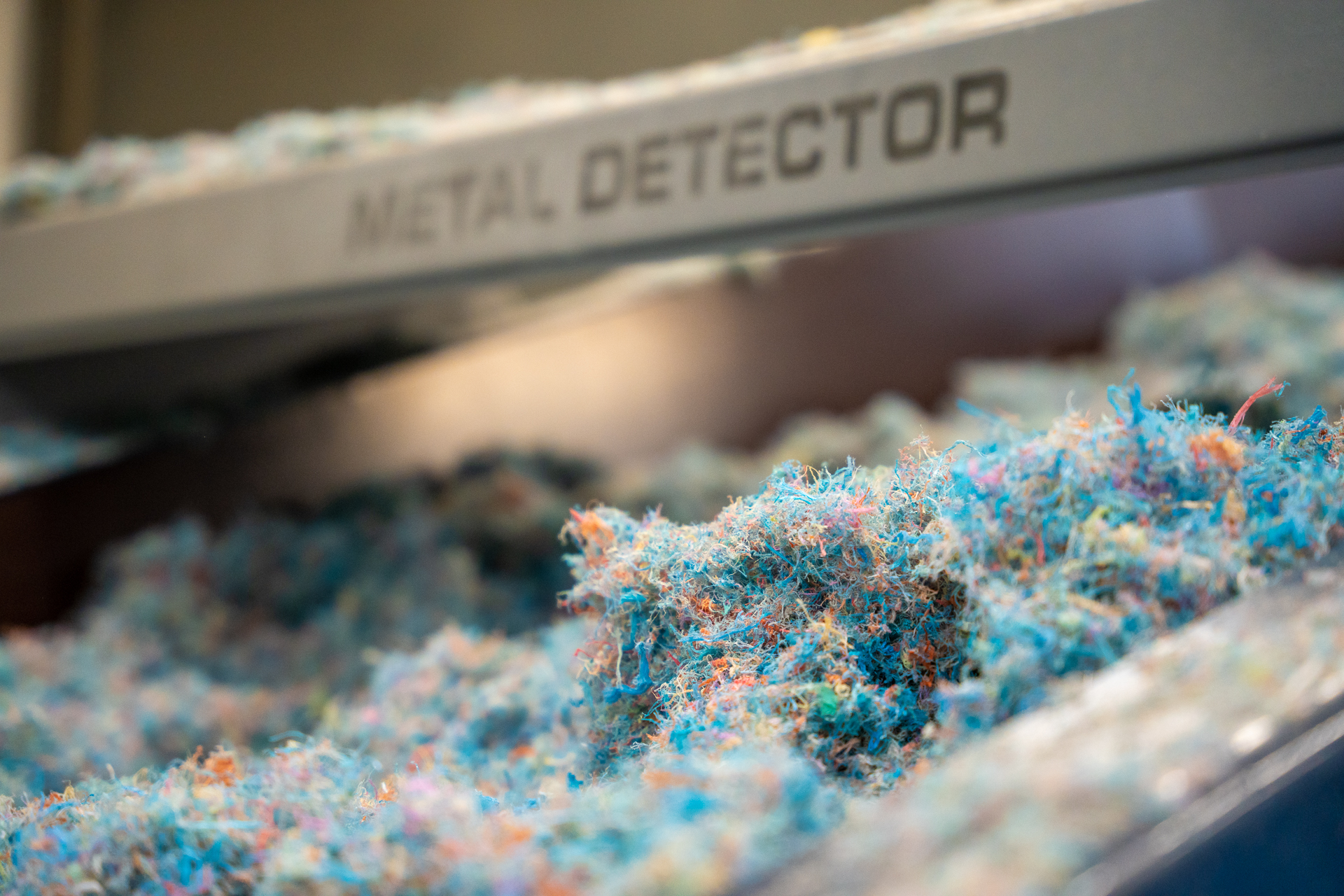
Healix's Innovative Solution
Healix is at the forefront of tackling the urgent challenge posed by plastic waste from the agricultural value chain, especially fiber based products like baler twine and net wrap. Our mission is to retrieve plastic waste from traceable sources and transform it into certified circular plastics using our advanced purification technology. By recycling agri plastic and keeping it within the economy, they not only reduce environmental harm but also help our customers lower their carbon footprint and dependence on virgin plastic.
Unique Suppliers
We engage in strategic partnerships with voluntary collection schemes such as A.D.I.VALOR, RIGK, and IFFPG, which play a critical role in collecting agricultural plastic waste in their countries. These collaborations are vital in our effort to remove plastics from natural ecosystems and keeing it in the economy.
Technology
The combination and sequence of our machines, and specific features of the equipment used to recycle plastic fiber waste into performance polymers, in combination with the skill set and experience of our people is unique and allow us to recycle plastic fiber waste into high-quality polymers, that they can be used again to make new ropes, nets and big bags.
From the storage location the material enters the recycling process. To allow for space efficient transport most waste materials are pressed into bales or transported in bulk packaging.
As the process requires a continuous and homogeneous feed of loose material with a limited thickness, the dense bales and bulk packages are first broken apart. This also allows for inspection of the individual contents of the incoming bulk packages. The bulk material is loaded on a loader-feeder platform and into the feed hopper. In the feed hopper the bales are opened up and fed to the conveyer belt that transports the material to the chopper/cutting equipment.
Since post-consumer waste can be heavily contaminated with organic waste e.g. marine fouling, soil/sand, grass and other non-plastic waste, a first pre-cleaning and sorting step is conducted prior to feeding the material to the shredder and the washing process. Pre-cleaning and sorting at an early stage in the process has several advantages: Firstly, it removes contamination that could otherwise lead to increased wear and abrasion of the cutter/chopper knifes and components. Secondly, it reduces to amount of contamination that is released to the water in the washing step of the process. This reduces the efforts for water purification and reduces the ‘wet’ waste streams, called sludge.
After the pre-sorting/cleaning, the product must be reduced in size. This is especially relevant for long fibrous materials like twines, yarns and ropes, as they can cause problems further downstream in the process when in sufficiently shredded. In addition, reduced particle size often result in a better surface/volume ratio, hence easier to clean.
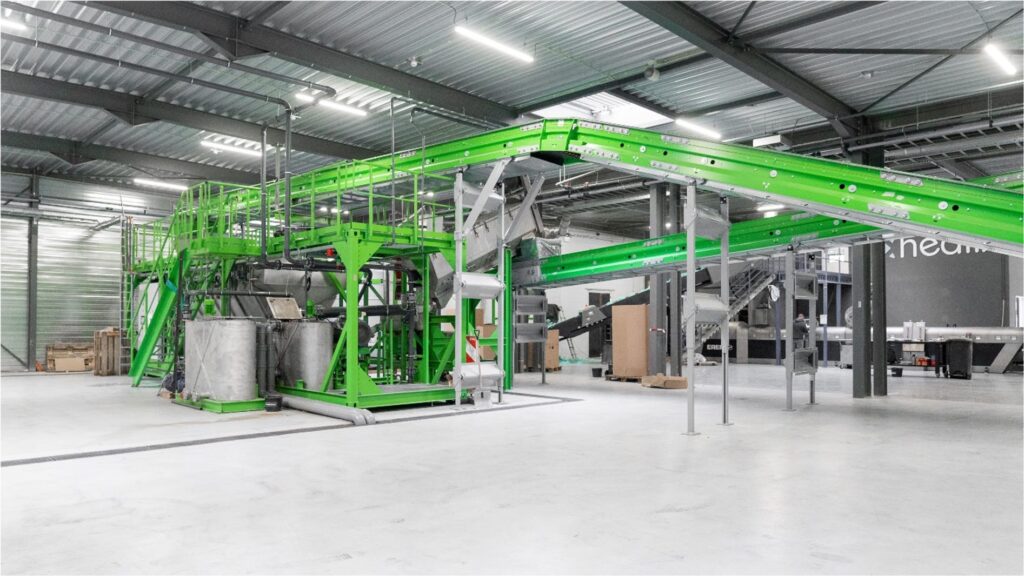 Once the material has been sorted and chopped into smaller particles it can be transferred to the cleaning segment of the recycling line, where the goal is to remove and extract all contamination, (organic and non-organic) that is attached to the plastic particles and entrapped within the fibrous plastic waste.
The use of resources during the process is equally important: we minimize water consumption by purifying it, by doing so the water cleaning process can be made closed loop. This is a crucial feature as it pertains to the mission of contributing to the environment.
For materials of different low diameter fibers, like e.g. ropes, nets and textiles, there is a high likelihood that contamination is entrapped between the individual filaments or in the remaining construction of the assembly. After mechanically washing the product structure and adherence is further destroyed, this allows entrapped particles to be released. To remove these released particles from the product stream, separation is required. With different separation methods the main material can be isolated from the rest. The post-cleaned material is then transferred, via a buffer storage, to the compounding section of the production line where it will be further processed.
Once the material has been sorted and chopped into smaller particles it can be transferred to the cleaning segment of the recycling line, where the goal is to remove and extract all contamination, (organic and non-organic) that is attached to the plastic particles and entrapped within the fibrous plastic waste.
The use of resources during the process is equally important: we minimize water consumption by purifying it, by doing so the water cleaning process can be made closed loop. This is a crucial feature as it pertains to the mission of contributing to the environment.
For materials of different low diameter fibers, like e.g. ropes, nets and textiles, there is a high likelihood that contamination is entrapped between the individual filaments or in the remaining construction of the assembly. After mechanically washing the product structure and adherence is further destroyed, this allows entrapped particles to be released. To remove these released particles from the product stream, separation is required. With different separation methods the main material can be isolated from the rest. The post-cleaned material is then transferred, via a buffer storage, to the compounding section of the production line where it will be further processed. Plastics extrusion is a high-volume manufacturing process in which raw plastic is melted and formed into a continuous profile. This process starts by feeding the cleaned and dried fiber from the buffer storage to a hopper into the barrel of the extruder (1,2). The material is gradually melted by the mechanical energy generated by extruder screws (3) and by heaters arranged along the barrel.
In this process the melt passes the melt-filter and is then degassed (6) in order to extract unwanted gasses that are formed during the melting process. The molten polymer is then forced into a die and pelletizer unit (8), which shapes the polymer into a shape that hardens during cooling.
For optimal transport and processing of the recycled material by our customers, small sized plastic pellets are preferred over long, semi-continuous, polymer extrusions. Therefore pelletizing plays an important role in the recycling process. For pelletizing, the extruded polymer melt emerging from the holes in the heated pelletizer die face are cut off by rotating knives (2). The pellets are flung outward by the centrifugal force into a rotating water ring (3). This cools the pellets and transports them via a flexible discharge channel to the to the pellet water removal screen (4). The pellets pass through the oversize particle separator to the drying centrifuge.
The produced pellets are then conveyed in a stream of air through a transport duct/conveyer to the silo or bagging station, where the big bags are filled, labeled, stacked on pallets and transferred to a temporary storage location (preferably on-side) prior to shipment.

Value chain partnerships
We work together with maritime waste collectors from various European countries and NGO’s who collect discarded ropes, nets and ghost gear from our oceans.
Tama & A.D.I.VALOR
A cornerstone of our initiative is the strategic partnership between Healix, Tama, our launching customer and the leading global provider of crop baling solutions, and A.D.I.VALOR, a dedicated French organization specializing in the collection and sorting of plastic agricultural waste. This collaboration is distinguished by A.D.I.VALOR’s role in supplying Healix with baler twines for recycling. These twines undergo a sophisticated recycling process at Healix, converting them into recycled propylene of such high quality that it can be seamlessly utilized in a closed-loop system to produce new Tamacycle baler twines. This partnership not only signifies a milestone in promoting a circular economy within the agricultural sector but also highlights the commitment of all to ensure that used materials are effectively collected and repurposed. These partnerships have been instrumental in propelling our mission forward, setting a precedent for sustainable innovation in agricultural practices.
Products and applications
Healix® is a family of branded circular polymers derived from plastic fiber waste, primarily collected in marine and agricultural environments. Healix® polymers are a sustainable solution to replace virgin fiber plastics. Post-consumer recycled agricultural plastic granules are accessible in grades: PP and HDPE.
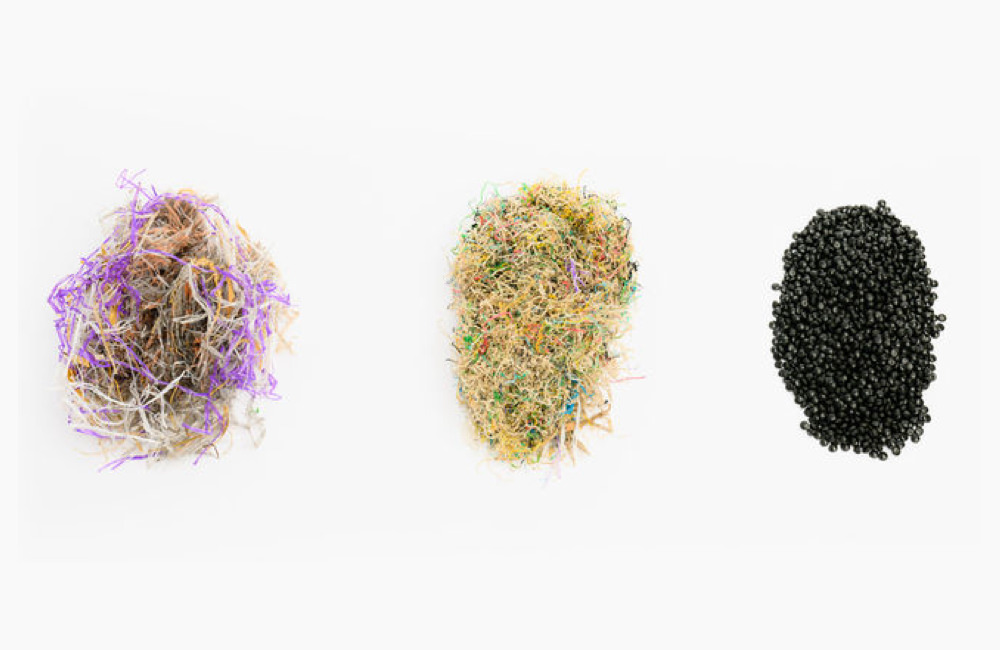
HD- Recycled Net Wrap (XHD-NW)
Tailored for the maritime industry, these ropes are a testament to the durability and reliability required at sea.
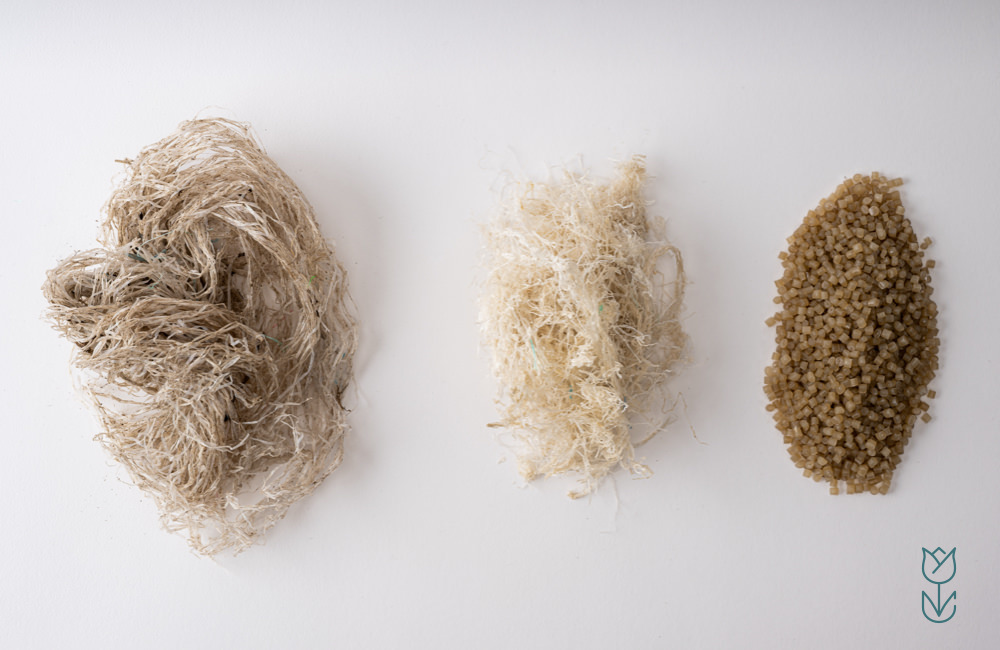
HDPE – Recycled Tulip Nets (XHD-TN)
Ideal for agricultural uses, particularly in tulip farming, these nets support sustainability in horticulture.
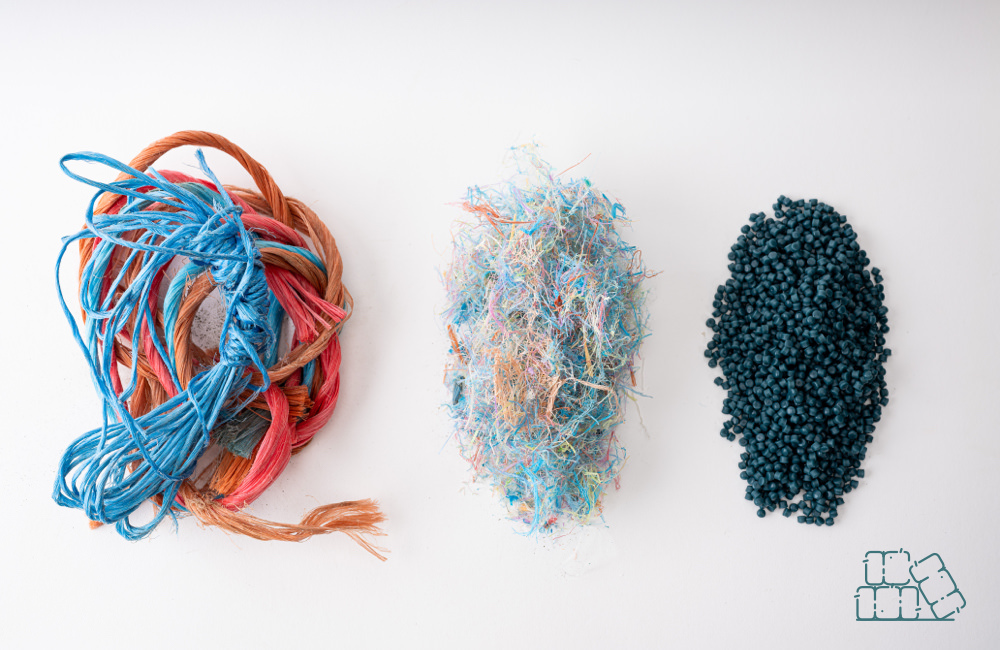
PP – Recycled Baler twine (XPP-BT)
Essential for agricultural applications, our balertwine combines strength with sustainability.
Benefits of Collaborating with Healix
Partnering with Healix offers a multitude of advantages aimed at sustainability, compliance, and enhancing your brand’s reputation:
By collaborating with us, you actively reduce your reliance on non-renewable fossil fuels, contributing to a more sustainable future.
Prepare your business for upcoming governmental policies, including taxes and incentives related to the utilization of post-consumer plastics, ensuring your operations remain ahead of regulatory changes.
Play a significant role in mitigating the global plastic pollution issue by integrating recycled plastics into your products and operations.
Dramatically cut CO2 emissions by more than 95%, moving towards a nearly climate-neutral footprint with our recycling processes.
Enhance your company’s image by demonstrating a commitment to environmental sustainability and responsible resource use.
Join Us in Creating a Sustainable Future
Healix invites you to explore the benefits of our circular polymers from farmlands and join us in our mission to solve the plastic problem. By choosing our products, you contribute to a more sustainable world, ready for the challenges of tomorrow.


